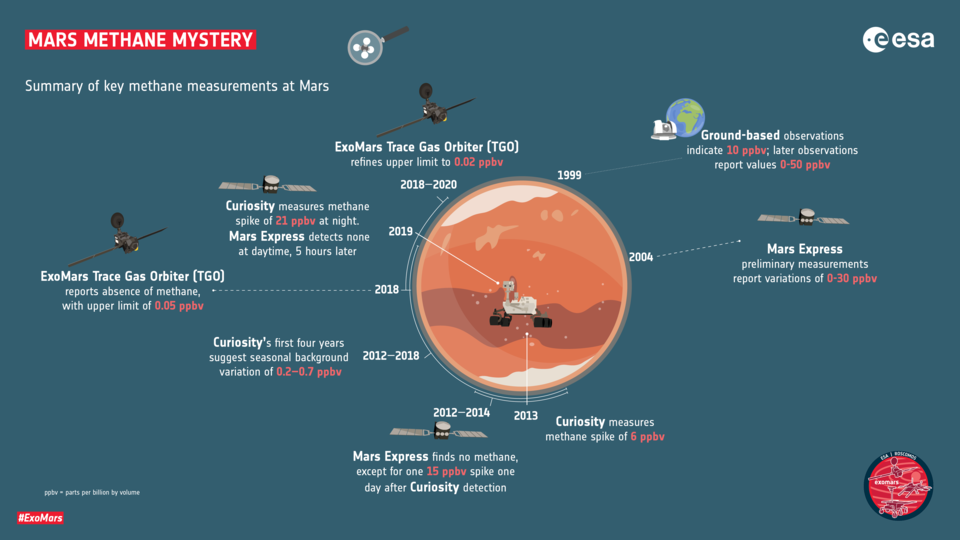ESA-Roscosmos Trace Gas Orbiter has set new upper limits on how much methane, ethane, ethylene and phosphine is in the martian atmosphere – four so-called ‘biomarker’ gases that are potential signs of life.
Searching for biomarkers on Mars is a primary goal of the ExoMars Trace Gas Orbiter. A key biomarker of interest is methane, as much of the methane found on Earth is produced by living things or geological activity – and so the same may be true for Mars.
The ‘methane mystery’ on Mars has been ongoing for many years, with contradictory findings from missions including ESA’s Mars Express and NASA’s Curiosity rover capturing sporadic spikes and bursts of the gas in Mars’ atmosphere, fluctuations both in orbit and at the planet's surface, signs of the gas varying with the seasons, or not observing any methane at all.

Previous estimates from Mars and ground-based missions range from 0.2 up to 30 parts per billion by volume (ppbv), indicating up to 30 molecules of methane per billion molecules. For reference, methane is present in Earth’s atmosphere at nearly 2000 ppbv.
However, the first results from the Trace Gas Orbiter, reported in April 2019, spotted no methane, instead calculating that, if present, the gas must have a maximum concentration of just 0.05 ppbv.
“We have now used the Trace Gas Orbiter to refine the upper limit for methane at Mars even further, this time gathering data for over 1.4 martian years – 2.7 Earth years,” says Franck Montmessin of LATMOS, France, Co-Principal Investigator of the Trace Gas Orbiter’s Atmospheric Chemistry Suite (ACS) and lead author of one of a trio of new papers on martian biomarkers.
“We found no sign of the gas at all, suggesting that the amount of methane at Mars is likely even lower than previous estimates suggest.”
As the orbiter’s instruments are highly sensitive, if methane is present it must be at an abundance of less than 0.05 ppbv – and more likely less than 0.02 ppbv, say Franck and colleagues. The scientists also hunted for signs of methane around Curiosity’s home, Gale crater, and found nothing, despite the rover reporting the presence of methane there.
More information can be found on the official ESA press release here

